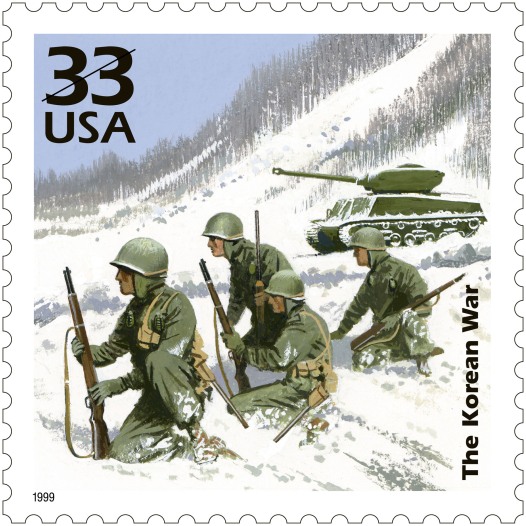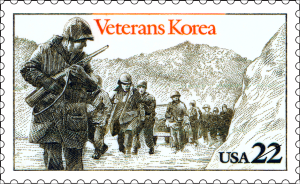 From June 1950 to July 1953, the United States was engaged in conflict with North Korea and the Soviet Union in what would be known as the Korean War.
From June 1950 to July 1953, the United States was engaged in conflict with North Korea and the Soviet Union in what would be known as the Korean War.
The U.S., as part of the United Nations’ forces, enacted an immediate military response to Soviet-backed North Korea’s invasion of South Korea on June 25, 1950. For two months U.N. troops, led by United States general Douglas MacArthur, were forced to retreat from the border, establishing a stronghold in the southwestern portion of the peninsula.
Eventually the North Korean army was driven back across the 38th parallel—the dividing line between the two countries. For three years, U.S. troops defended South Korea’s independence and the world’s right to democracy.
 On July 27, 1953, an armistice was reached. The Cold War positions adopted by the United States and Soviet Union as a result were drawn hard and fast along the tensely guarded 38th parallel.
On July 27, 1953, an armistice was reached. The Cold War positions adopted by the United States and Soviet Union as a result were drawn hard and fast along the tensely guarded 38th parallel.
Fighting half a world away, many Americans were disconnected from the conflict, but the effects of the Korean War were known all to well to the veterans and those who sacrificed their lives in the heat of battle. We commend all of the U.S. servicemen who answered the call of duty and fought for freedom.
In 1985, the U.S. Postal Service celebrated the brave veterans of the war with the Veterans of Korea stamps. As part of the Celebrate the Century series on the 1950s pane, a stamp honoring the Korean War was issued in 1999.
What sort of impact did the Korean War have on you and your family?

